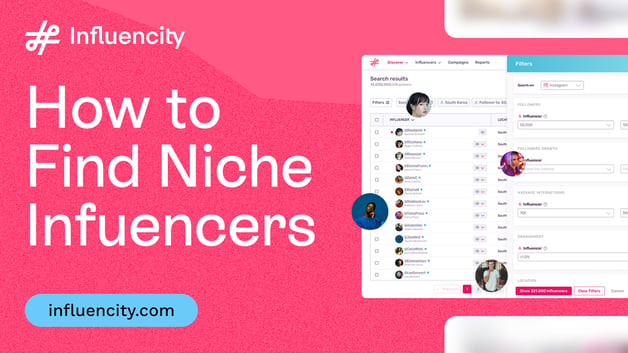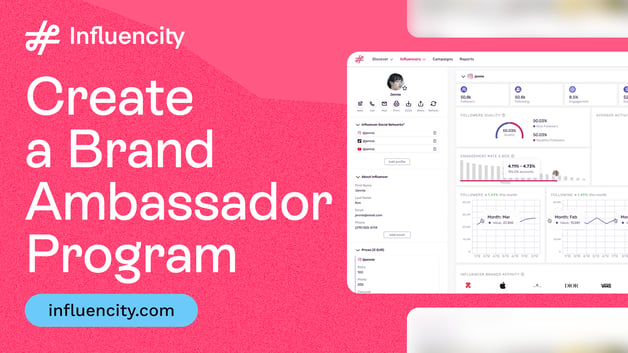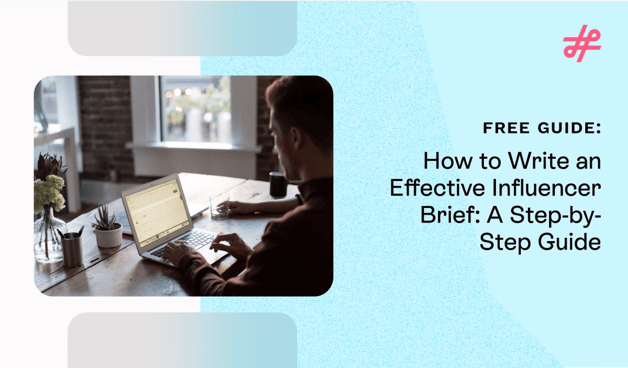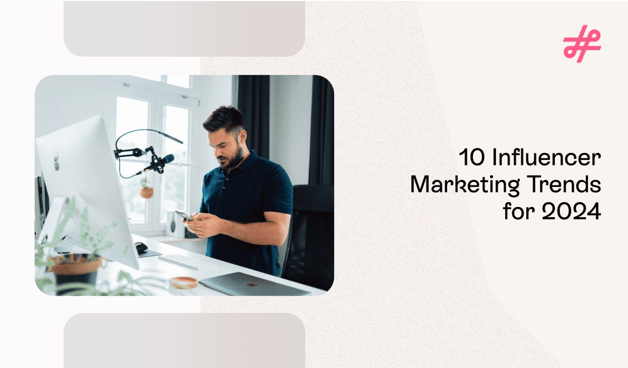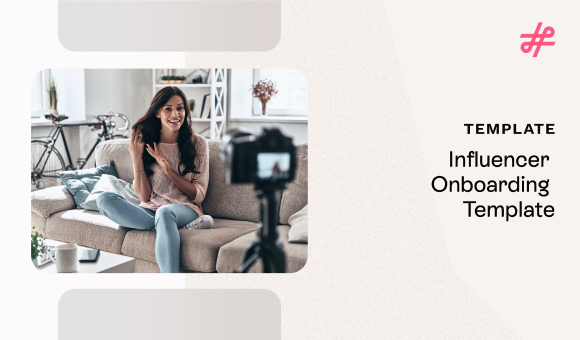Influencer Marketing
Defining Influencer Target Audiences for Maximum Impact: How Nike Targets the Right Influencer Audience
Influencer Marketing
Why do so many influencer campaigns flop, even when the creators have millions of followers?
Because it’s not just about who’s promoting your product. It’s about who’s listening.
The smartest influencer strategies aren’t driven by follower counts or fame. They’re driven by audience alignment, the match between the creator’s audience and the customer you’re trying to reach.
Nike understands this better than most.
When they launch a new running shoe, they don’t just partner with the biggest names in fitness. They choose creators whose followers are runners: other people who lace up every morning, track their miles, and care about performance.
And when Nike speaks up about social issues, they highlight voices that are already trusted in those communities.
The key to influencer success? Know who you want to reach, and choose influencers who actually reach them.
In this guide, you’ll learn how to identify the audience that matters most for your brand, how to clearly outline the traits of your ideal customer, and how to use data-driven tools to make sure your influencer partnerships reach the right people.
Why Audience Alignment Matters More Than Follower Count
When brands talk about influencer partnerships, they often start by talking about who they want to work with.
But the real question isn’t “Which influencer?”
It’s “Which audience?”
Many brands jump straight to creator selection. Yet, audience alignment is just as critical. Here’s how the two compare:

Even the best creator can’t deliver results if their audience isn’t the right fit. That’s why audience targeting should shape your influencer choices from the very beginning.
An influencer’s follower count tells you how many people are watching. But it doesn’t tell you who those people are or whether they’re the right fit for your product or campaign.
This is why defining your influencer target audience is so important. It’s not just about who follows an influencer. It’s about whether those followers are the right people for your brand.
What Really Defines an Influencer's Target Audience?
To make smart influencer choices, you need more than just high-level stats like age or follower count. What really matters is understanding the audience on a deeper level: how they think, what they care about, and how they interact online.

There are three important layers to explore when defining your influencer target audience:
- Demographics:
Start with the basics: How old are these followers? Where are they located? What language do they speak? What is their gender? These details help you avoid spending budget on audiences who are unlikely to become your customers. - Psychographics:
Go beyond the “who” and ask about the “why.” What are these people interested in? What motivates them? Are they fitness enthusiasts training for their first race? Are they parents looking for simple wellness tips? When you understand these personal drivers, it becomes easier to craft messages that feel relevant. - Behavioral Patterns:
Take a close look at how the audience shows up online. Do they actively comment and share? Are they participating in fitness challenges, asking questions, or seeking product recommendations? Behavior like this tells you if the audience is truly engaged—or just casually scrolling by.
“Audience alignment beats audience size… every time.”
The better you understand these layers, the easier it becomes to choose influencers whose audience is likely to care about what you’re offering.

Real-World Target Audiences: Examples from Nike
Nike’s strategy plays out across a spectrum, from elite athletes to everyday creators. Here’s how they adapt that approach across different communities.
Faith Kipyegon – Running Audience (Elite Performer)
For its “Breaking4” campaign, Nike supports Kenyan middle-distance runner Faith Kipyegon in her quest to break the four-minute mile barrier. This partnership isn’t about broad fitness appeal. It’s about connecting with serious runners and track fans who understand the significance of such a performance milestone. Kipyegon’s audience is invested in endurance, achievement, and the science of sport, all central to the campaign’s message.

Sabrina Ionescu – Basketball Audience (WNBA Star, Macro Influencer)
When Nike launched the Sabrina 1, the first WNBA signature shoe in over a decade, they partnered with WNBA standout Sabrina Ionescu. Her followers include young basketball players, especially women and girls, who see themselves reflected in her journey. This is a targeted choice, not just a partnership with a famous athlete, but with one who inspires and engages the exact community the product was made for.
Cleopatra Lee – Everyday Fitness and Community Wellness (Micro Influencer)
In the “See The Road” campaign, Nike collaborated with Harlem-based fitness coach Cleopatra Lee. Lee isn’t a celebrity athlete. But she has a strong, authentic connection with her community and shares wellness messages that resonate with everyday fitness seekers. Her audience trusts her advice because she shows up consistently and relates to their lived experiences.
Nigel Sylvester – Urban Youth and Street Culture (BMX Athlete, Grew from Nano to Macro)
BMX rider Nigel Sylvester started as a local Queens athlete and caught Nike’s attention early for his authentic connection to urban cycling culture. Through collaborations like the “GO” video series and a signature Air Jordan 1, Sylvester speaks directly to an audience of street athletes and youth who see him as one of their own, not just a brand spokesperson.
From marathoners to streetballers, Nike doesn’t just partner with any athletes. They partner with the right athletes for each product and audience. The goal is always the same: connect with the people most likely to care, engage, and take action, not just anyone who happens to be watching.
From ICP to Influencer: How to Find the Right Audience Fit
Before you can choose the right influencer, you need to know who you're trying to reach—and whether the influencer can actually reach them. This means clearly defining your Ideal Customer Profile (ICP) and using that lens to evaluate influencer audiences.

Define Your Ideal Customer Profile (ICP)
Think of your ICP as your audience blueprint. The more specific you are, the easier it becomes to spot influencers who can help you connect with that group. Key questions to ask:
-
Who are they?
Consider age, location, gender, career stage, and lifestyle. Are they college students in major cities? Parents of young kids? Mid-career professionals training for their first half-marathon? -
What do they care about?
Are they motivated by performance and results? Do they value sustainability and ethical brands? Are they looking for expert advice or peer recommendations? -
How do they make decisions?
Do they research products on social media before they buy? Are they influenced by user reviews, expert endorsements, or both?
Think of how Glossier approaches its audience. They don’t just target “beauty lovers.” They focus on skincare-obsessed Gen Z women who value minimalist routines and peer-to-peer product recommendations. That level of specificity guides everything from their brand voice to the influencers they partner with.
Vet Influencers Through the Lens of Your ICP
-
Who’s Actually Following Them?
It’s easy to assume that an influencer’s followers are “just like them,” but that’s not always true. Take the time to review audience insights: Where are their followers located? How old are they? Do these details line up with your Ideal Customer Profile? -
How Is Their Audience Showing Up?
Engagement tells you more than follower count ever could. Are followers just scrolling past—or are they pausing to comment, ask questions, or share the content? Meaningful engagement is a sign that the audience isn’t just present—they’re paying attention.
-
Is Their Audience Real?
Not all followers are created equal. Some accounts boost their numbers with bots or purchased followers. Not sure how to spot these red flags? Here’s a helpful guide on how to spot fake influencers and avoid wasting your budget on audiences that aren’t real. Look for signs of an authentic, active audience: steady growth, genuine comments, and consistent interaction.
-
Does Their Content Feel Like the Right Fit?
Audience alignment is only part of the equation. The influencer’s style and tone should also match the way your brand wants to show up. If their content feels forced or off-brand, even the right audience might tune it out.
“The right influencer reaches the right audience—at the right moment—with the right message.”

Top Tools for Analyzing Your Influencer Target Audience
Once you’ve defined your ICP, tools like Influencity and TikTok’s Creator Marketplace help you verify whether a creator can actually reach that audience.

- Influencity offers deep segmentation insights (age, gender, engagement) and flags unusual growth or fake followers, giving you confidence that your message will land with real people.
- TikTok Creator Marketplace lets you filter by interests, location, and audience behavior, which is especially useful when working with niche creators or regional campaigns.
Use these tools to vet audience quality and make sure the data backs up your gut instinct.

Avoid These 5 Audience Targeting Mistakes in Your Influencer Campaigns
"It can’t hurt to have someone talk about your brand, right?" – the worst influencer marketing sales pitch I’ve ever heard.
Every time I hear that, I cringe. Sure, if someone mentions your brand casually, unpaid, and unprompted, that’s highly valuable word of mouth. But when you're investing in influencer partnerships, whether through paid collaborations, product seeding, product gifting, or long-term relationships, you’re not just crossing your fingers and hoping for the best.
You’re paying to put your message in front of a specific audience. And that audience matters. A lot.
If you skip the work of choosing the right audience, even the most creative influencer content won’t move the needle. This is where many brands go wrong, and often, it happens before the campaign even launches.
Here are some of the most common mistakes to avoid when defining your influencer target audience (and how to get it right):
Mistake #1: Relying on Follower Count Instead of Audience Fit
A big following doesn’t guarantee results. What matters is who those followers are—and whether they match your ICP.
Do this instead:
Use audience analysis tools to confirm alignment before investing.
Mistake #2: Ignoring Audience Quality
Even if an influencer’s audience size and age range look good on paper, they may still miss the mark if their audience is located in the wrong region, or if the interests of their followers don’t match your campaign goals.
Do this instead:
Check location data, audience interests, and engagement behavior. Make sure you’re not spending budget on a beautifully produced campaign that reaches the wrong market.
Mistake #3: Overlooking Audience Authenticity
Fake followers and bots can inflate numbers but won’t move the needle on your results. Some influencers may not even realize their audience quality has been compromised by spam accounts or purchased followers.
Do this instead:
Always vet for authenticity. Look at engagement rates, comment quality, and audience growth trends. Tools like Influencity can help flag suspicious activity before you commit.

Mistake #4: Forgetting About Content Fit
An influencer might check all the boxes when it comes to audience data—but if their content style doesn’t feel like a natural extension of your brand, the partnership can feel forced (and audiences will notice).
Do this instead:
Review their past content carefully. Ask yourself: Does their tone align with your brand voice? Will their audience see your product recommendation as genuine—or as an awkward sponsorship?
Mistake #5: Targeting the Wrong Gender Just Because It’s Easier
If your product is for men, your influencer’s audience should be men. That might sound obvious, but some brands get talked into working with female creators simply because they’re more available or easier to book. This is especially true on Instagram, where only ~16% of sponsored posts come from male influencers, according to Influencer Marketing Hub.
It’s tempting to justify it: “Women buy gifts for the men in their lives,” or “Her audience includes men.” But male followers aren’t always the right kind of followers—and men don’t follow women for product recommendations.
The same applies in reverse. Some female influencers have mostly male audiences—often attracted by appearance, not lifestyle relevance.
Do this instead: Stick to your ICP. If you’re targeting women, make sure the influencer’s audience is primarily women. If you’re targeting men, don’t compromise. Ask for audience gender data. The right audience is non-negotiable.
Quick Checklist: Are You Targeting the Right Influencer Audience?
Once you’ve narrowed down your list of potential influencer partners, it’s worth pausing to ask a few key questions before you move forward. Here's a list to check to ensure you’re not just choosing an influencer—you’re choosing the right influencer for your audience.

Are you focused on meaningful engagement, not just reach?
High reach looks good on paper, but it’s engagement that builds trust and drives action. Make sure your strategy prioritizes quality over quantity. If you’re not sure which metrics matter most, here’s a helpful guide on how to measure influencer campaign success beyond follower counts.
Does the influencer’s audience reflect your Ideal Customer Profile?
Look beyond surface-level stats. Are the followers the right age, location, gender, and lifestyle fit for your product?
Are their most engaged followers aligned with your buyer personas?
Check who’s actually interacting with their content—not just who’s following. Engagement tells you who’s paying attention.
Have you reviewed the audience’s authenticity?
Look for steady audience growth, real comments, and healthy engagement rates. Use tools to spot any red flags like fake followers or sudden spikes.
Does the influencer’s content style feel like a natural fit for your campaign?
Think about tone, visuals, and message alignment. Will the partnership feel seamless to their audience?
By running through this list before you finalize your influencer partnerships, you’re setting yourself up for stronger connections, better campaign performance, and a message that lands where it matters most.
Conclusion: Audience Fit Over Follower Count—Your Blueprint for Smarter Influencer Targeting
When influencer campaigns miss the mark, it’s rarely because the creator wasn’t talented or the content wasn’t beautiful. More often, it’s because the right message never reached the right people.
The most successful brands know that audience alignment is the difference between a campaign that gets likes and one that drives real results.
It’s not about chasing the biggest names. It’s about choosing partners whose audience matches your ICP, whose engagement is genuine, and whose style fits your brand.
With tools like Influencity, you can stop guessing and start connecting with the people most likely to care, engage, and convert.
Lynne Clement
Lynne Clement knows influencer marketing from every angle, having worked across agencies, brands, and platforms for nearly 20 years. Her insights come from marketing experience at Procter & Gamble, leading marketing strategy and execution at a top influencer agency, and working inside an influencer platform. During...





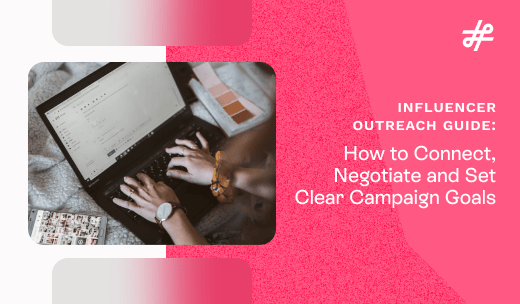
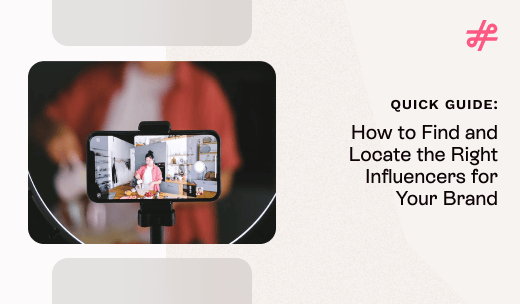



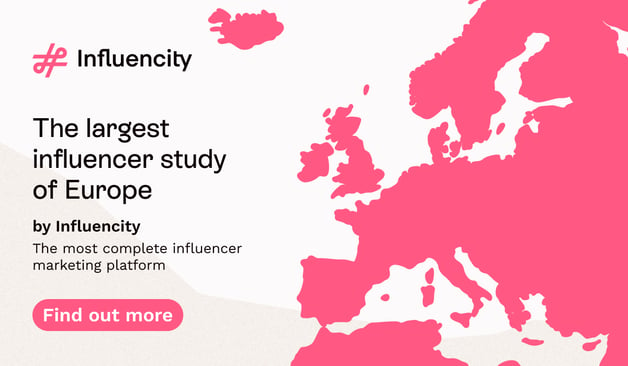




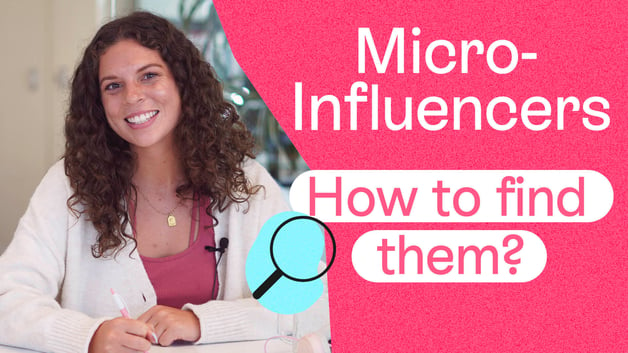


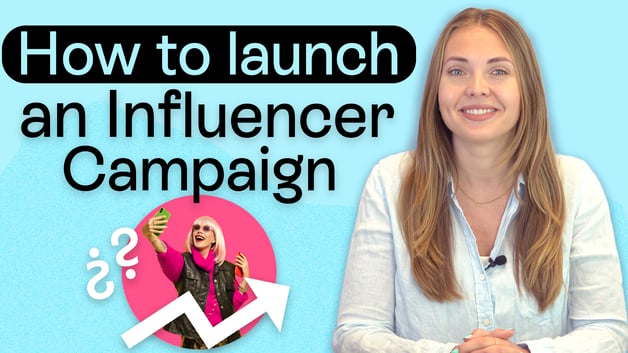



%20and%20How%20Can%20They%20Benefit%20Your%20Brand%20article.jpg?length=628&name=What%20Are%20Key%20Opinion%20Leaders%20(KOL)%20and%20How%20Can%20They%20Benefit%20Your%20Brand%20article.jpg)
